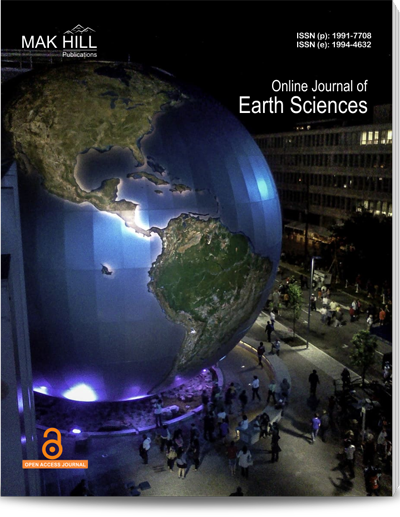
Online Journal of Earth Sciences
ISSN: Online 1994-4632ISSN: Print 1991-7708
Abstract
The rates of rising and decay of solar quiet daily variation, Sq and equatorial electrojet, EEJ, strength at equatorial zone have been quantified and examined over a long term (1980-2000). A quantitative measurement of the rising and decay rates are proposed and used in the study. Estimated rates and their ratios are subjected to morphological and statistical analysis. The rising and decay rates exhibit day-to-day variability and traditional geomagnetic equinoctial maximum. The daily rates are solar controlled with Sq showing greater response to solar activity than EEJ. The rising rate is greater than decay rate for both current systems. Electromagnetic induction effect is expected to be greater during the rising of the currents. While EEJ builds faster than Sq, they both exhibit insignificant different decay rates. The cumulative mean values of (rising; decay) rates for the entire period are (10.49; 7.02) nT h-1 and (8.54; 7.09) nT h-1 for EEJ strength and Sq, respectively. The diurnal rates demonstrate positive correlation with the ionospheric and existing Sq current /EEJ model parameters. The ratio of the rising rate to decay rate has an average value of 1.57±0.51nT h-1 for EEJ and 1.22±0.26 nT h-1 for WSq. The results indicate that the effect of local wind activity on the ionospheric dynamo process is more pronounced in the EEJ field than Sq.
How to cite this article:
A.B. Rabiu , Nandini Nagarajan and K. Saratchandra . Rising and Decay Rates of Solar Quiet Daily Variation and Electrojet at Equatorial Region.
DOI: https://doi.org/10.36478/ojesci.2007.85.92
URL: https://www.makhillpublications.co/view-article/1991-7708/ojesci.2007.85.92